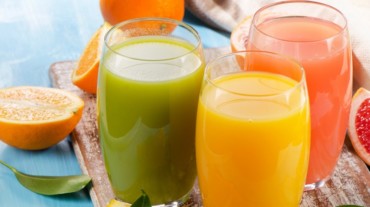When it comes to maintaining their children’s health, it is every parent’s responsibility to provide them with a balanced diet. As parents, you must ensure that they receive all the vitamins, minerals, and other nutrients to grow healthy and fit. This could occasionally leave you unsure of what is and isn’t appropriate when it comes to child nutrition.
As a result, many mothers who may be concerned about their child’s nutrition may mistakenly believe misconceptions! That’s why we’re here to help and bust myths you may have about child nutrition and diet.
Health Shots got in touch with Dr Rahul Nagpal, Director and HOD Pediatrics, Fortis Hospital, Vasant Kunj, to find out all the myths around child nutrition.
Here are 5 myths about child nutrition:
Myth 1: Children need to drink milk daily
Fact: Milk is an essential source of calcium for your kid in order to strengthen their bones and teeth. But you might not need to give it to them each day. Dr Nagpal says, “Most Indian parents insist that their children should be drinking milk each day for stronger bones. No doubt, calcium is a very important nutrient for the body and milk is a good source, but calcium needs can be fulfilled by other products also like yogurt, cheese, curd, nuts, etc.” If your child is lactose intolerant, give them fish, soy, products, almonds and dark green vegetables.

Myth 2: Children will starve if they do not eat or skip a meal
Fact: The second common myth which all parents may have is that when a child has skipped a meal then he/she will starve and something might happen to him which is another big myth. “Skipping a meal occasionally does not make much of a difference. You must have seen that kids are not hungry in the early morning. However they feel hungry later in the day. Throughout this period the children will have something or other and they will balance out their food.” But if it is a regular habit then it may need attention.
Myth 3: Kids need to eat an egg regularly
Fact: Eggs are an excellent source of protein, iron, healthy fats, vitamin D, E, A and B12 and choline and for kids they’re important. But it is not compulsory for your kid to have at least one egg every single day. Dr Nagpal says, “There are other food sources such as soya, nuts, lentils, etc that are also rich in protein. And we all know yogurt is such a rich source of protein and healthy bacteria that is helpful in better digestion. Tofu is also a rich source of protein. So, if a child does not want to have an egg and you’re forcing him or her, it will not help.”
Also, read: Here are 5 reasons why FRUITS are better than fruits juice
Myth 4: Fruit juices are healthy for children
Fact: Another common myth is that fruit juices are the healthiest. When compared to sugary sodas, fruit juice may appear to be a healthier beverage alternative. But the American Academy of Pediatrics (AAP) advises reducing the amount of juice children consume or avoid giving them especially if your kid is under one. Drinking excessive fruit juice can put your child’s health at risk. Dr Nagpal also says, “Even if there is no added sugar, children need a variety of other nutrients. A whole fruit may be better than a juice at best. Because that will give fiber, vitamins, minerals etc.” At best, the juice can act as a supplement, but not as the main nutrient.

Myth 5: You can bribe them with sweets to feed them vegetables
Fact: No dear moms! It’s a common thing for moms to do to lure them into eating vegetables for a chocolate afterward. It may work for a short time, but it will not always work because you end up giving junk food many times because you wanted the child to have a green vegetable. “The best way is to eat with your child and involve him or her in other activities like cutting vegetables or selecting vegetables so that he gets interested in food,” says Dr Nagpal.
Source link




